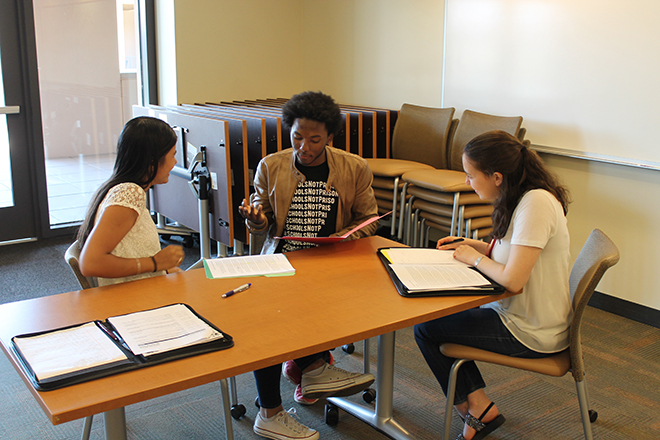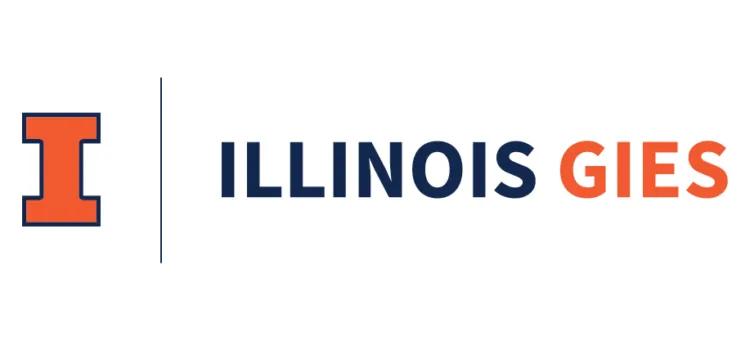
Participants at the first Stanford MBA Future Leader’s Program. Courtesy photo
For three days last August, 83 rising juniors from universities across the U.S. got to experience MBA life at the world’s best graduate business school. And for three days this August, another group will get the same opportunity. Established last year, the Stanford MBA Future Leaders Program at Stanford University’s Graduate School of Business has officially opened the application period for its second rendition of the three-day boot camp. And this year, like last year, the program focuses on giving a diverse set of the nation’s top college students a glimpse of what few see — the Stanford MBA experience.
“The achievement gap in this country does not stop at high school or college graduation,” says Simone Hill, a Stanford GSB admissions officer and the program’s staff director. “We know that we want to provide these students the opportunity build a competitive application not only for potentially our MBA program, but for any other school or job in the future.”
Participants in the program spend three days in classes with GSB faculty, living in GSB residential facilities, exploring Stanford’s infamous Design School, and touring companies around the Silicon Valley and San Francisco Bay Area ecosystem. According to Hill, the intent of the program is to get the students — who are handpicked from across the nation by GSB admissions staff — to see themselves as Stanford MBA students. The next goal, Hill says, is to prepare them for job and MBA application processes.
“My team and I believe people typically aspire to the things they’ve been exposed to,” Hill explains. “It is very hard for someone to conceptualize becoming an investment banker or a computer scientist or archeologist if they have absolutely no idea what that is. Or if they’ve never met anyone in those fields, then it’s hard to visualize what the path towards accomplishing those goals looks like.”
A PIPELINE TO INCREASING DIVERSITY IN GRADUATE BUSINESS EDUCATION
According to a robust report released last year, little has been done to close the educational achievement gap between black and white students since the 1960s. The 50-year follow-up on the 1965 Coleman Report, which first highlighted achievement gaps based on 12th-grade math and reading test scores of black and white students, was authored by Eric Hanushek, a senior fellow at the Hoover Institution at Stanford University and research associate at the National Bureau of Economic Research. “After nearly a half century of supposed progress in race relations within the United States, the modest improvements in achievement gaps since 1965 can only be called a national embarrassment,” Hanushek scathingly wrote in the report. Indeed, the report shows that outside of the South, little progress has been made in closing the gap in standardized test scores between black and white students. (The report does not look at Hispanic students or other populations.)
On the other hand, a Pew Research report in 2016 revealed an 8% increase from 1993 to 2014 in blacks aged 18 to 24 enrolled in college. However, despite a 33% enrollment rate in 2014 compared to 25% in 1993, the number has actually trended down since peaking in 2009 at around 39%. Moreover, Latinos have surpassed blacks with a college enrollment rate of 35% — which still trails Asians (64%) and whites (42%). More troublingly, in 2014, only 22% of blacks aged 25 to 29 possessed a bachelor’s degree. Despite a decade-long uptick in college enrollment, the completion rate in 2014 remained substantially lower than that of Asians (63%) and whites (41%).
A 2014 report looking specifically at black and Latino Ph.D. students and post-docs showed a 44% seven-year completion rate among those populations. So while more minority students are graduating from college and enrolling in graduate schools, their completion rate is still significantly lower than their white counterparts. And while the students selected for last year’s Future Leaders program have certainly already achieved much regardless of race or socioeconomic background, many elite MBA programs have traditionally been dominated by white males. What’s more, Hill says, without mentors or role models in positions or programs where students of color want to aspire, it puts them at a disadvantage.
Supplying role models and a support system is one of the main goals of the Future Leaders program, Hill says. “The opportunity Stanford has given them to see themselves worthy enough to dream that big and think that big is incredible,” she says, noting that the selection process goes beyond diversity of race and socioeconomic backgrounds and into “diversity of thought and experiences.”
“It’s something I don’t take for granted,” Hill continues. “And something I know they don’t, either.”
ONE PARTICIPANT’S REMARKABLE JOURNEY TO COLLEGE AND THE FUTURE LEADER’S PROGRAM
One of those students is Cesar Segura Gonzalez. Born and raised in the Mexican state of Jalisco, Gonzalez’s family moved to the Dallas area when he was 10. Even though he attended public schools in Farmer’s Ranch, a suburb northwest of Dallas, Gonzalez did not fully learn English until he was 15. No one in his family had ever been to college, and when Gonzalez began applying to colleges, it looked unlikely he would make it, either. In fact, he was outright rejected from his top choice, the nearby University of Texas at Dallas. Despite his parents pleading with him to enroll in a lesser school where he might stand a better chance of being accepted, Gonzalez went down to the UT-Dallas undergraduate admissions office to plead his case. It worked. He was accepted provisionally and eventually earned a full scholarship from the Hispanic Scholarship Fund.
On the whole, Latinos have made massive strides in seeking higher education in recent years. According to the 2016 Pew study, Latino high school dropout rates fell a remarkable 20 percentage points from 2000 to 2012, to 12% from 32%. Cause for celebration? Not quite: The 12% rate still is substantially higher than that of blacks (7%), whites (5%), and Asians (1%). Latinos also still lag in actually earning a college degree. In 2014, just 15% of Latinos aged 25 to 29 had obtained a four-year bachelor’s degree — significantly trailing Asians (63%), whites (41%), and blacks (22%). One reason could be that some 48% of Latinos entering post-secondary education go into two-year programs. That rate is higher than blacks (36%), Asians (32%), and whites (30%).
When Gonzalez was accepted into UT-Dallas, he used the admissions snafu as motivation to perform and thrive.
“I used that obstacle for my advantage,” the accounting and finance major says. “Since I started school here, I always knew I had to put in a little bit more effort that others. And now, just in life in general, I always try to put in a little more effort than others.”
Gonzalez first heard about Stanford’s Future Leaders Program through the Hispanic Scholarship Fund and was encouraged by a mentor at UT-Dallas to apply. He still remembers the tears of joy he cried the day he was accepted to the program. The trip was Gonzalez’s first to California, and it has “propelled” him to start thinking and looking at graduate school, he says. “Even though it was just three days, we learned a lot about ourselves and the school,” Gonzalez says.










